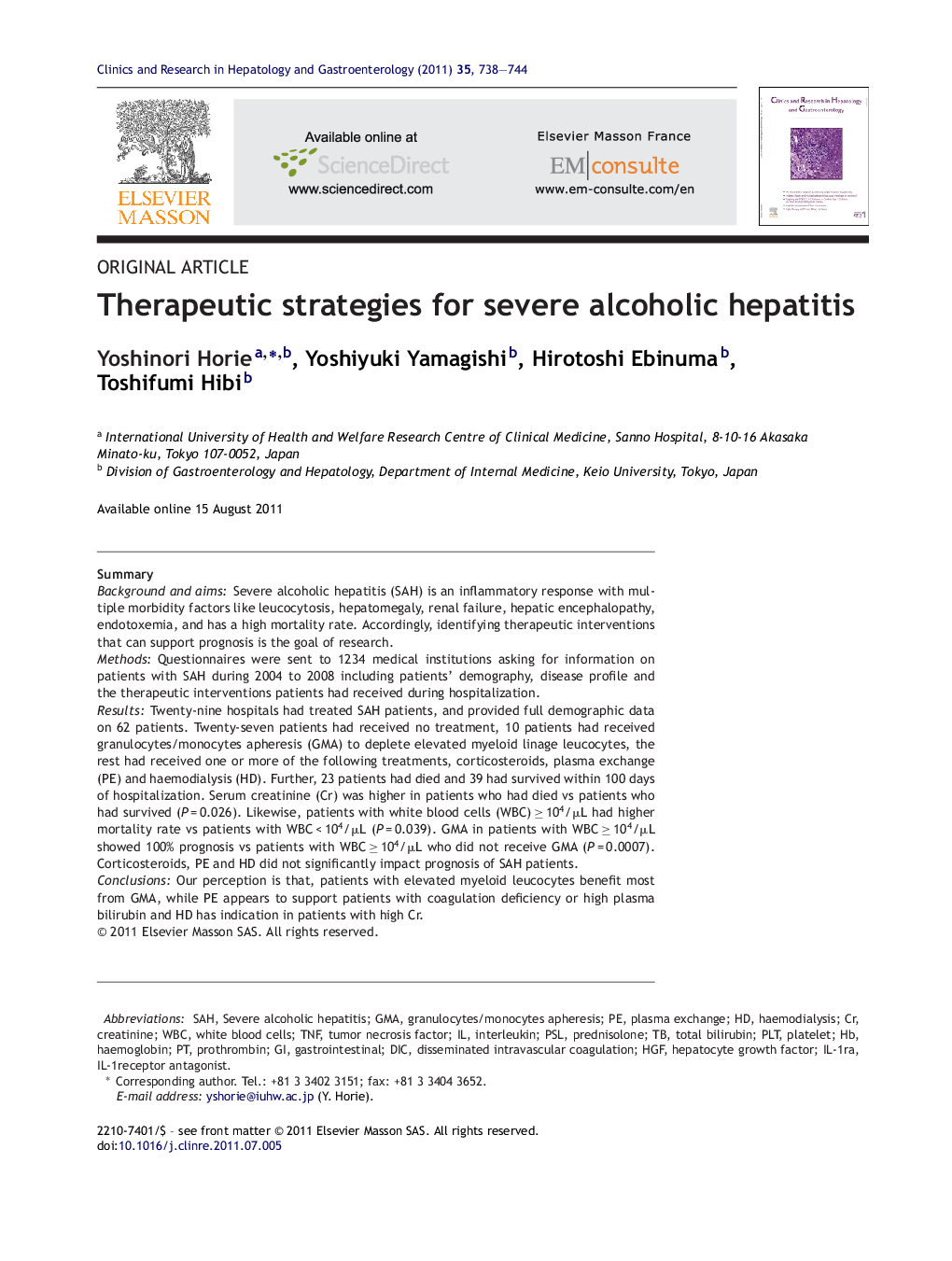| Article ID | Journal | Published Year | Pages | File Type |
|---|---|---|---|---|
| 3286096 | Clinics and Research in Hepatology and Gastroenterology | 2011 | 7 Pages |
SummaryBackground and aimsSevere alcoholic hepatitis (SAH) is an inflammatory response with multiple morbidity factors like leucocytosis, hepatomegaly, renal failure, hepatic encephalopathy, endotoxemia, and has a high mortality rate. Accordingly, identifying therapeutic interventions that can support prognosis is the goal of research.MethodsQuestionnaires were sent to 1234 medical institutions asking for information on patients with SAH during 2004 to 2008 including patients’ demography, disease profile and the therapeutic interventions patients had received during hospitalization.ResultsTwenty-nine hospitals had treated SAH patients, and provided full demographic data on 62 patients. Twenty-seven patients had received no treatment, 10 patients had received granulocytes/monocytes apheresis (GMA) to deplete elevated myeloid linage leucocytes, the rest had received one or more of the following treatments, corticosteroids, plasma exchange (PE) and haemodialysis (HD). Further, 23 patients had died and 39 had survived within 100 days of hospitalization. Serum creatinine (Cr) was higher in patients who had died vs patients who had survived (P = 0.026). Likewise, patients with white blood cells (WBC) ≥ 104/μL had higher mortality rate vs patients with WBC < 104/μL (P = 0.039). GMA in patients with WBC ≥ 104/μL showed 100% prognosis vs patients with WBC ≥ 104/μL who did not receive GMA (P = 0.0007). Corticosteroids, PE and HD did not significantly impact prognosis of SAH patients.ConclusionsOur perception is that, patients with elevated myeloid leucocytes benefit most from GMA, while PE appears to support patients with coagulation deficiency or high plasma bilirubin and HD has indication in patients with high Cr.
